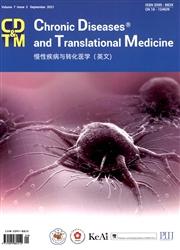Family history of type 2 diabetes and the risk of type 2 diabetes among young and middle-aged adults
Abstract
Background
The prevalence of type 2 diabetes has been growing among younger and middle-aged adults in the United States. A portion of this increase for this age group may be attributable to shared type 2 diabetes risks with family members. How family history of type 2 diabetes history is associated with type 2 diabetes risk among younger and middle-aged adults is not well understood.
Methods
This population-based retrospective cohort study uses administrative, genealogical, and electronic medical records from the Utah Population Database. The study population comprises offspring born between 1970 and 1990 and living in the four urban Utah counties in the United States between 1990 and 2015. The sample comprises 360,907 individuals without a type 2 diabetes diagnosis and 14,817 with a diagnosis. Using multivariate logistic regressions, we estimate the relative risk (RR) of type 2 diabetes associated with the number of affected first- (FDRs), second- (SDRs), and third-degree (first cousin) relatives for the full sample and for Hispanic-specific and sex-specific subsets.
Results
Individuals with 2+ FDRs with type 2 diabetes have a significant risk of type 2 diabetes in relation to those with no affected FDRs (RR = 3.31 [3.16, 3.48]). Individuals with 2+ versus no SDRs with type 2 diabetes have significant but lower risks (RR = 1.32 [1.25, 1.39]). Those with 2+ versus no affected first cousins have a similarly low risk (RR = 1.28 [1.21, 1.35]). Larger RRs are experienced by males (2+ vs. 0 FDRs, RR = 3.55) than females (2+ vs. 0 FDRs, RR = 3.18) (p < 0.05 for the interaction). These familial associations are partly mediated by the individual's own obesity.
Conclusions
The risks of type 2 diabetes are significantly associated with having affected first-, second-, and third-degree relatives, especially for men. One of the forces contributing to the rising patterns of type 2 diabetes among young and middle-aged adults is their connection to affected, often older, kin.


 求助内容:
求助内容: 应助结果提醒方式:
应助结果提醒方式:


